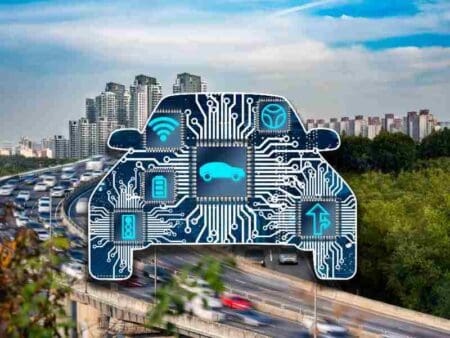
The American National Standards Institute (ANSI) published a Roadmap of Standards and Codes for Electric Vehicles at Scale, developed by the Institute’s Electric Vehicles Standards Panel (EVSP).
The roadmap’s primary focus is on light-duty, on-road plug-in electric vehicles (EVs) that are recharged via a connection to the electrical grid, as well as the supporting charging infrastructure needed to power them.
Medium- and heavy-duty EVs are also covered, as is wireless charging.
A total of 37 standardization gaps were identified with corresponding recommendations across the topical areas of vehicle systems, charging infrastructure, grid integration and cybersecurity. ANSI said it hoped that the roadmap would see broad adoption by the user community and facilitate a “more coherent and coordinated approach” to the future development of standards for EVs.
Have you read:
Does V2G pose a cyber threat to the grid?
India to get its first V2G system
The grid-related gaps that were identified included:
- Megawatt charging systems
- Static wireless charging
- Communication of standardized EV sub-metering data
- Standardization of EV sub-meters
- Comprehensive review of cybersecurity codes and standards for applicability to the EV charging ecosystem
- The lack of an end-to-end secure trust chain and encryption system for the EV charging ecosystem
- Cybersecurity and data privacy
- Cybersecure firmware updates
- Cable management
- Fire protection in relation to EV parking/charging in/near older buildings
- Fault current signatures for AC and DC architectures under islanding conditions
- “Ride through” requirements for EVSE under grid service conditions
- DC-as-a-Service (DCaaS)
- Dynamic wireless charging and power export
- Communications in support of wireless power transfer
The panel does not develop standards but serves as a forum for facilitating coordination among entities that do develop standards.
Of the 37 gaps, 14 gaps/recommendations were identified as high priority, 20 as medium priority, and three as low priority. In 23 cases, additional pre-standardization research and development (R&D) was said to needed. The roadmap also provides timeframes for when standards work should occur, and identifies organisations that may be able to develop the standards or perform the R&D.
The target audience for the roadmap includes vehicle manufacturers; entities that will be installing and operating charging infrastructure; standards development organisations; US federal, state, and municipal government agencies; electric utilities; and others.
Originally published on Power-Grid International.








